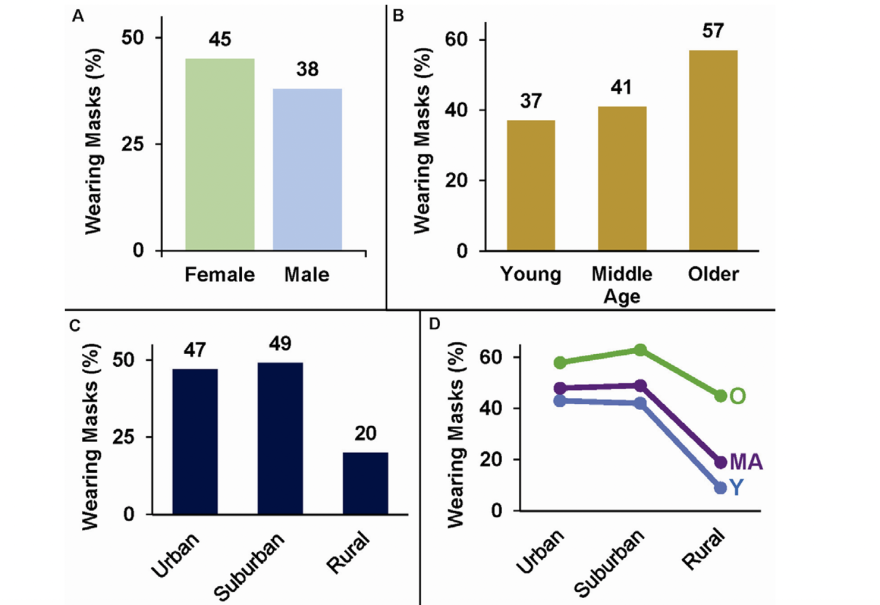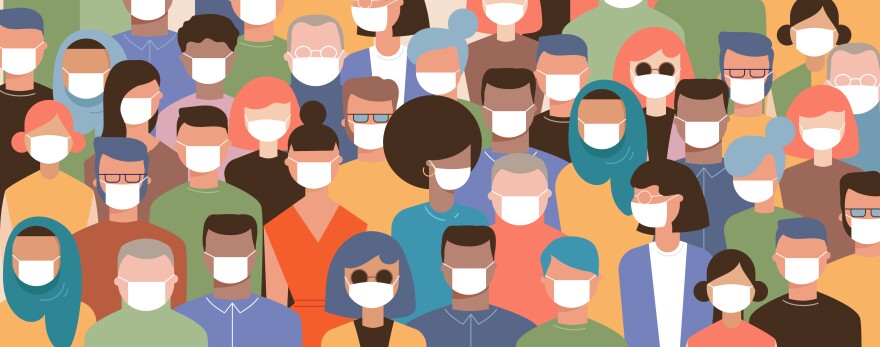Masks are a proven and effective tool in fighting the spread of COVID-19, but some people still resist wearing them. Just last week, Wisconsin Gov. Tony Evers extended the statewide mask mandate until Nov. 21 as coronavirus cases continue to rise in the state.
Until recently, mask-wearing hasn’t been studied in the U.S. But a new study out of Marquette University breaks down the demographics of mask wearers and resistors, and how mandates impact behavior.
"Through this research, we've shown that mandates are necessary to promote the practice [of wearing masks] and the practice is necessary to slow the spread [of the coronavirus]," says Mike Haischer, an author of the study.
Marquette students observed shoppers entering retail stores in Milwaukee, Ozaukee, Sheboygan, Washington, and Waukesha counties throughout the summer to see how gender, age, and location factor into mask-wearing.
The first round of data was collected in early June before Evers’ mask mandate, finding that 41.5% of people were wearing masks. But another round was conducted after the mandate was put in place in late July and early August, finding that about 80% of people were wearing masks.

“We’re hoping that this shows that mandates certainly make a difference,” says Dr. Sandra Hunter, another author of the study. “We need rates of at least 80-90% to quell the spread of the disease and when people are just left to their own devices, certainly we saw first like that 40%, and that’s just not adequate.”
When it comes to gender, their research found that women are more likely to wear a mask than men.
“[Women] are about 1.5 times more likely than males to wear a mask, which is particularly concerning because we have evidence that men are at greater risk for more severe outcomes from COVID-19,” says Haischer.
They say this could be for a number of reasons related to how men and women perceive their roles in their communities. With women often being cast as caretakers, men may feel less obligated to wear a mask and also may feel less masculine for wearing one, according to Haischer.

As for location, suburban and urban areas are wearing masks at about the same rate but rural areas are wearing masks at less than half the rate of suburban and urban communities. While higher population density can make transmitting COVID-19 easier, that does not mean rural communities are safe.
“When you go into a store, it’s the same sort of density in terms of shopping yet people aren’t transferring that way of thinking that, ‘Oh, now I am going into a more populated area, I should be wearing a mask’,” says Hunter.
"Through this research we've shown that mandates are necessary to promote the practice and the practice is necessary to slow the spread." - Mike Haischer, Marquette University
Haischer says the study came from a conversation where he complained about "most people" not wearing masks. "And the great scientist that [Hunter] is said, 'Where's your evidence for that?' " Haischer says.
But when they went looking for data on the subject they couldn’t find much.
“Nobody is really studying mask-wearing observationally," notes Haischer. "I mean, you can send out survey data all you want, but self-reported measures are not always reliable and so, we just decided to gather some students that were looking for some work to do and go out into the community and observe mask-wearing."
Hunter says that one positive of this study was the opportunity it gave to students to see a study go from a question to a finished product. Because of the coronavirus pandemic, students and staff had the time and the opportunity to not just complete this study but also launch the Marquette COVID-19 Research Initiative. Blogs by students about the pandemic and how it affects physical activities have also been created, as well as a podcast called COVID Conversations.







